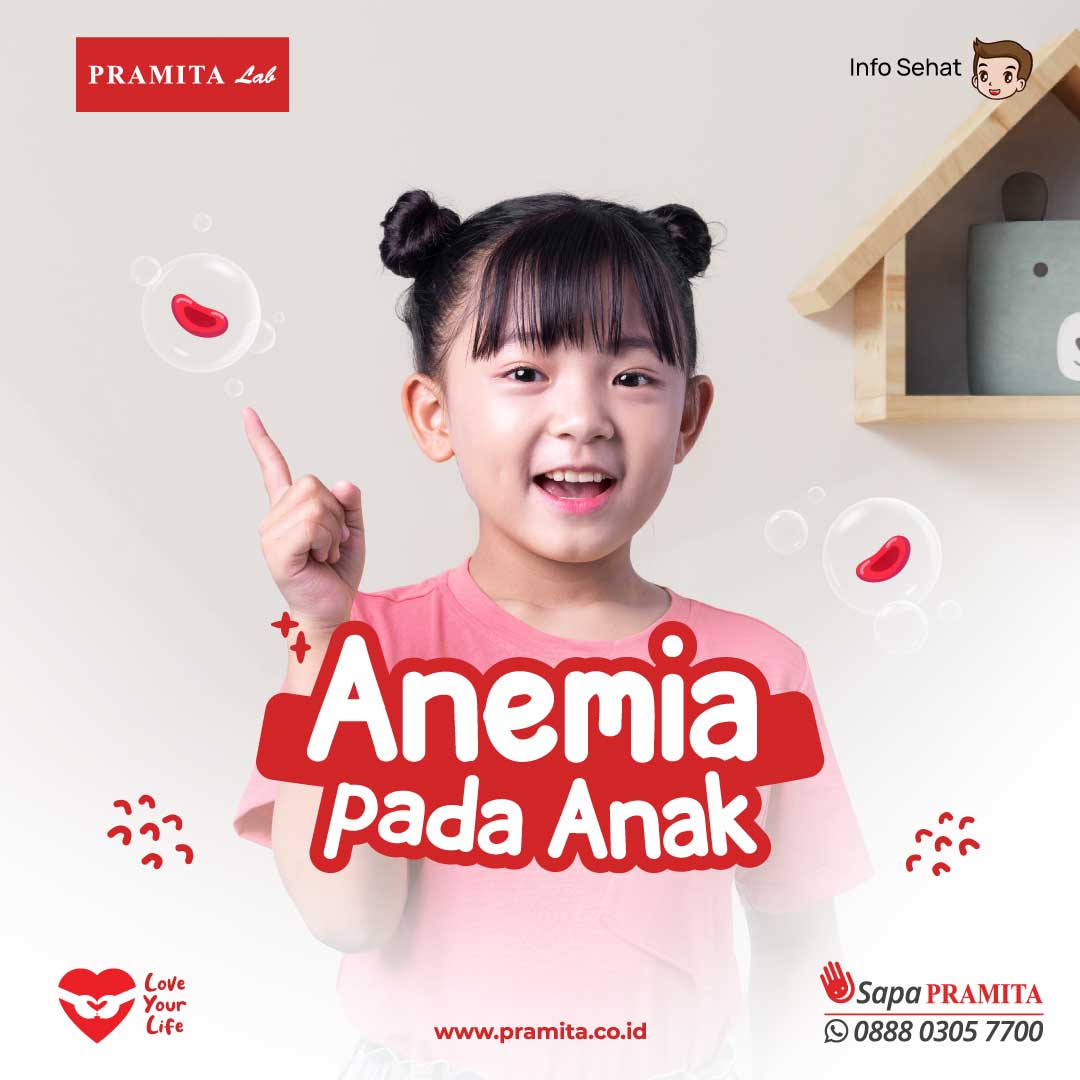Healthy Inspirations

Anemia Among Children
Wed, 8 Feb 2023Anemia is a serious global public health problem that particularly affects young children and pregnant women. WHO estimates that 42% of children less than 5 years of age and 40% of pregnant women worldwide are anaemic.
Anemia is a condition in which the number of red blood cells or the haemoglobin concentration within them is lower than normal. Haemoglobin is needed to carry oxygen and if there is too few or abnormal red blood cells, or not enough haemoglobin, there will be a decreased capacity of the blood to carry oxygen to the body’s tissues.
Types of Anemia :
- Hemolytic anemia is a blood condition that occurs when your red blood cells are destroyed faster than they can be replaced.
Due to it’s cause, there are two main causes of hemolytic anemia :
- Autoimmune conditions
- Inherited blood conditions such as Sickle Cell Anemia, Thalasesia, G6PD deficiency.
- Anemia Due to Excessive Blood Loss. This excessive blood loss can happen due to severe bleeding events such accidents, intestinal bleeding, etc
- Anemia that occurs when production of most or all types of blood cells is suppressed , such as
- Aplastic Anemia occurs when When the bone marrow cells (stem cells) that develop into mature blood cells and platelets are damaged or suppressed (example : malaria or due to the intestinal worm investment).
- Iron Deficiency Anemia, occurs when there is no sufficient intake of iron
- Vitamin B 12 or Folic Acid Deficiency Anemia, occurs when there is no sufficient intake of vitamin B 12, or any nutritional disorder condition where body is unable to absorb the essential substances.
- Blood Cancer ( Leukemia)
Factors associated with anemia in children
- Preterm or low birth weight
- Early use of infant formula / cow's milk
- Insufficient intake of iron, or vitamin B12 and folate
- Surgery or accident with bleeding
- Long-standing / chronic pain (as in the case of infections and kidney and liver disorders)
- Family history of anemia.
Symptomps in Anemia
- Pale
- Fatigue
- Less active
- Shortness of breath (dyspnea)
- Dizziness
- Prolonged term of wounds
- Yellowish skin, appears particularly in hemolytic anemia
- Delayed growth in children with iron deciency anemia
How to Diagnose Anemia?
Consultation with doctor
Doctor will carry out tests necessary to help to identify the anemia such as physical, and laboratory tests. In some rare cases, genetic and spinal cord testing is also suggested
Anemia Therapy
Treatment of anemia is done depending on the type of anemia and levels of hemoglobin
Those treatments are :
- Treatments on the spesifc cause of anemia . When anemia is caused by malaria, for example, drugs can be administered using anti malaria
- Iron or vitamin supplements
- Change in diets
- Blood transfusion
- Bone marrow transplantion due to anemia caused by blood malignancy
- Stop or replace medications that may trigger anemia
Therapy or management of anemia vary, depending on the type of anemia and hemoglobin levels in the blood.
The therapy carried out can be:
* Administration of drugs when anemia is caused by another disease / underlying disease (eg administration of malaria drugs in the case of malaria and anthelmintic in the case of worms)
* Provision of iron / vitamin supplements
* Improved diet / diet settings
* Blood transfusion
* Bone transplantation (in anemia due to blood cancer)
* Stop or replace medications that may cause anemia.
Anemia among children can be prevented in various ways :
- Provide nutritious and nutritionally balanced food ( Iron rich foods like meat, fish, spinach, broccoli, potatoes and tofu tempeh can be added to the diet menu)
- Breastmilk provides nutritions the babies needed, try not to give the babies formula milk , especially when they are younger than 1 year. Breastmilk’s iron content is higher than the formula milk.
- Additional iron intake from vitamins or supplements can be given to the older children, but it is highly recommended to seek for doctor’s advice in choosing the type and dosage given
Author: Dr. Odilia Lustriana (medical consultant doctor of PRAMITA Clinic Lab Branch Jl. M. Toha No. 163 Bandung)

